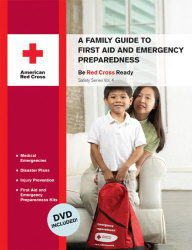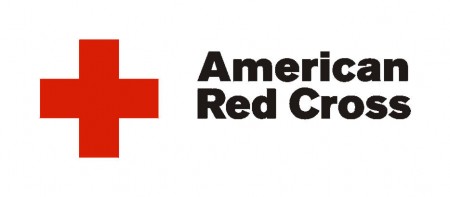Editors Note: This is Chapter 2 in a reprint of this five-part series, published on Daily Kos and originally published online by AlphaGeek {9.9.05}. From the diaries — Plutonium Page. The series offers a practical way to assess risk and prepare a variety of disaster scenarios. The series will appear chapter by chapter at 3 p.m. through Friday.
Chance favors the prepared mind. – Louis Pasteur
 In any given disaster situation, you will find a group of people who maximize their chances for survival by making the correct choices before, during, and after the crisis. These folks have a few things in common:
In any given disaster situation, you will find a group of people who maximize their chances for survival by making the correct choices before, during, and after the crisis. These folks have a few things in common:
- Each of them personally decided that he/she was going to survive
- They accurately assessed their immediate and near-term risks and needs
- They made the best plan they could based on available resources
- They executed that plan in a flexible, adaptive manner
- They kept going until they had reached safety, and did not give up
The single most important thing you can do to survive a disaster is to be mentally prepared.
Being prepared for disaster does not have to be time-consuming or expensive. In this multi-part series of DailyKos Diaries, I will share with you, dear reader, many of the lessons I’ve learned regarding the most effective ways to prepare for an emergency.
This is the second installment in a multi-part series on personal disaster preparedness. Your humble correspondent is a Silicon Valley technical executive with both professional and personal experience in risk assessment and disaster-readiness planning.
WARNING: This Diary series discusses a wide range of disaster-related subjects in a straightforward, honest fashion. Some people may experience a strong emotional reaction to reading about or discussing situations which are normally avoided in polite conversation. You have been warned.
When disaster strikes, will you be prepared?
In this installment, we will discuss step 2, planning to address risks. This topic will be continued in tomorrow’s installment.

People react in interesting ways when faced with emergency situations. When faced with a life-threatening situation, a great many people will simply freeze, unable to process events effectively and respond appropriately. A person who reacts in this manner may attempt to continue normal life at great risk to themselves and others, or may simply subside into shock and denial.
Another significantly large group will react by making a reasonable effort at ensuring their own survival and helping others, but may not be terribly effective at either. In many cases, these folks may take actions which increase risk to themselves and others. A significant percentage of this second group will, depending on the severity and duration of the emergency, go into shock and denial. In a group situation, good leadership can keep this to a minimum.
All the cool kids, though, fall into a third category. Whether by training or innate nature, members of this group are mentally prepared to overcome the challenges at hand. They have decided that dammit, they’re not going to give up and die, and that’s final.
Making the decision that you, personally, are going to survive makes all the difference in the world. How will YOU react?
Now, dear reader, you may think upon your fears and insecurities, and fret that you will surely react like the people in that middle group, blundering about making (potentially deadly) mistakes. Or, horror of horrors, you may even freeze up under stress and fail to cope with the situation at all. These are normal reactions, but they are not helpful in a disaster situation, to put it mildly.
So how do you avoid joining the ranks of the ineffective masses, waiting passively for help? It comes down to minimizing FUD — Fear, Uncertainty, and Doubt. If you have a solid basic emergency plan, you are well on your way to avoiding paralysis due to FUD. Like the smart man said, chance favors the prepared mind.
The principal means, however, of getting FUD under control and improving the chances that you’ll respond effectively in an emergency is simple: practice, practice, practice. Until you have actually attempted to execute a plan which looks good on paper, you have no guarantees that the plan works or that you will be ready to use it. A critical part of any preparedness program is periodic review and practice of your survival-critical plans.
Review point: Risk-assessment homework
The starting point for avoiding FUD is to think through as many problems as you can in advance of needing to deal with them. In Part 1 of 3 – Assess your risks! I gave you a homework assignment:
Your mission, should you choose to accept it, is to make a list of as many disaster risks as you can think of. Get your significant other and/or your kids involved, and make it a competitive event. Be lenient, at first, when considering whether something is a likely risk. Be sure to include all of the places where you might find yourself when disaster strikes — home, work, school, church, shopping, and so forth. Don’t consider the list closed until you’ve visited each of these places and looked, with a critical eye, at the risks we all ignore on a daily basis.
If you haven’t done your homework, please review the previous Diary in this series and make your list now. It is important for you, dear reader, to have a clear assessment of your risks in mind as you consider the material presented below. You simply will not get as much out of this if you do not already have a reasonably good understanding of the scenarios you are likely to face.
Now that you’ve put together your list of likely emergency situations, take another look at it. Have you included mundane, everyday disasters such as a house or apartment fire? Here is an example, as told to me by a professional firefighter, of how failure to plan effectively for a common house fire made a huge difference in the outcome:

Late one fall afternoon, a San Francisco Bay Area house burned to the ground. The occupants of the house escaped without injury, and when questioned by the fire chief knew exactly where and how the fire started. The family, to the perplexity of the fire chief and the inspector, stated that they had been unable to halt the spread of the fire despite having four Kidde home fire extinguishers on hand.
After the house had cooled off enough for the inspection team to enter, they found the origin of the fire to be exactly as it had been described to them. In the immediate vicinity of the origin point, they found four half-melted, unused fire extinguishers. Upon further inspection, they found the safety pins for said fire extinguishers in an area about ten feet back from the fire origin.
It turns out that the homeowners had pulled the pin on each fire extinguisher and lobbed it grenade-style into the vicinity of the fire. Unsurprisingly, this was not an effective means of halting the spread of the fire, which would have been easily controlled by a single correctly used fire extinguisher.
After you stop laughing, consider this: that family’s failure to read and understand the usage instructions on the fire extinguishers led them to respond ineffectively, costing them their house. They understood the risk of fire, but did not have an effective plan for dealing with the situation. The lesson here is that you can’t buy preparedness — you must be equipped to determine the correct action to take in a given situation, and it helps an awful lot if you get things figured out before you find yourself under stress, lobbing fire extinguishers like grenades and wondering why they’re not working.
 The American Red Cross (ARC) Get Prepared pages are an excellent resource for sanity-checking your list of risks. In addition, the ARC pages provide valuable reference material to use when you are ready to move on to phase 3, prepare.
The American Red Cross (ARC) Get Prepared pages are an excellent resource for sanity-checking your list of risks. In addition, the ARC pages provide valuable reference material to use when you are ready to move on to phase 3, prepare.
Prioritize your risks
Now that you have a reasonably complete compilation of hazards you might expect to face, it’s time to triage your list. Be realistic. The actual chance of a nuclear device detonating within the borders of the US is vanishingly small, whereas there’s a 62% probability of an earthquake strong enough to cause widespread damage to the San Francisco Bay Area between now and 2032.
“But AlphaGeek, I thought we were going to make a plan!”
Yes, Grasshopper, we are indeed here to get our collective act together by formulating a realistic, workable preparedness plan. Silly as it may sound, everything leading up to this point has been to get you prepared to get prepared. If you have read and thoughtfully considered the material presented so far, it’s guaranteed that you are not approaching this task the same way you would have last week.
Here are the key steps to developing and maintaining an effective plan:
- Develop your plans, seeking the input of everyone involved
- Review your plan against publicly availble resources, such as the American Red Cross (ARC) Get Prepared website
- Test each section of your plan by conducting a full-family drill
- Revisit your plan as your circumstances change
Regardless of the specific risks one might need to address, there are actually a limited number of general situations to plan for. We will discuss each of these in detail below.
While we yet draw breath, let us do all we can to see another day.
 Your top priority in an emergency is to ensure your own safety. If you are seriously injured or incapacitated, you are out of action for the duration and will not be helping anyone.
Your top priority in an emergency is to ensure your own safety. If you are seriously injured or incapacitated, you are out of action for the duration and will not be helping anyone.
A perfect example of this is a loss of cabin pressure on an airplane, which will cause the emergency oxygen masks to drop down. At high altitude, you will have 20 seconds or less to begin taking in supplemental oxygen before you pass out. It will take the typical person between 5 and 10 seconds to get over their startlement at the loud bang and sudden appearance of the masks, and realize that they do in fact need to take action immediately. If you spend that 10-15 seconds trying to put a mask on a panicky toddler, you’re never going to get your own mask on in time. By being mentally prepared, you can suppress your instinct to take care of your child first and thereby ensure survival for both of you.
For the purposes of this discussion, I will assume that that we need to develop a comprehensive disaster plan for a household with two adults, two school-age children, and a dog. At least one of the adults in this household works outside the home, with a commute of 20 miles. The household is located in a suburb or exurb of a major metropolitan area.
Think about what could go wrong, and plan to survive anyway
In the following example scenarios, we will focus on what you need to plan for, rather than the specific materials you’ll need to carry out your plan. Part 4 of this series will go into excruciating detail on all those sexy material goods — but in case it isn’t clear by now, having a good plan is far more important than buying a bunch of stuff. Plan first, then buy what you need to support your plan.
Scenario 1 – Severe Winter Storms

Description: A series of severe winter storms tear through the region, knocking out power to hundreds of thousands and disrupting rail and highway access. Retail availability of food and water supplies ranges from limited to nonexistent by day 4.
Scenario profile:
Family separated: NO
Immediate evacuation required: NO
Post-event evacuation required: Low probability
Services interrupted: YES (electricity, retail goods)
Mean time to restoration of services: 10 days
Period of initial isolation: 5 days
Communications: possible disruption of phone, cable TV service
Secondary risks: Structural damage or failure due to snow/ice load

Requirements for survival:
Environment: YES – heat
Electricity: YES – charge batteries, run small TV
Water: NO – water service uninterrupted
Nutrition: YES
Food preparation: YES
Lighting: YES
Passive communications: YES
Entertainment: YES
Active communications: Medical emergency only
Food preservation: NO – +20F outside = back-patio freezer
Clothing: NO
Transportation: NO
Shelter: NO – but see note on emergency repairs below
Whether you live on the Gulf Coast hurricane-impact zone, or in a northern state subject to severe winter storms, weather can present a serious threat to your safety. Humans are relatively sensitive to heat and cold outside a fairly narrow range, and few people realize how much energy Western society devotes to keeping us in our comfort zone.
In this scenario, you nearly always have the benefit of sufficient advance warning to get your family safely home before things get ugly. The safest course of action in this situation is to hunker down and make the best of things in the safety of your home.
When it’s 20F or less outside, even a well-insulated home will cool off quickly if the central heating system goes offline. As a commenter observed in the discussion of Part 1, gas-fired central heat doesn’t do you a whole lot of good if the blower and control electronics don’t have power. Be prepared to provide adequate heat to at least one room in your house. Consider consolidating everyone into one or two rooms with heat source(s) and closing off the rest of the house.
The tools and materials to make emergency repairs to your shelter are critical in this situation. When it’s pounding down freezing rain outside, night is coming, and the wind is whistling through a broken window, you will not have the option of waiting for the handyman. Have a plan for repairing broken windows and/or doors, and assume that you will not have the use of power tools.
Electricity. Americans are addicted to it, your correspondent included. Most people immediately think “generator” when the topic of emergency electric power comes up. The fact is, you already have a generator parked in your garage. Your family car, coupled with a modestly sized DC-to-AC inverter, is capable of supplying enough power to make a huge difference in your standard of living while grid power is offline. Generators and DC-AC inverters will be discussed in detail in Part 4.
Water supply is generally not an issue in cold-weather states, as the water delivery system is designed to survive severe weather. Appropriate weatherproofing techniques should be implemented to prevent frozen and/or burst pipes, especially if central heating is offline.
Sanitation goes hand-in-hand with water pressure. In my experience, the biggest sanitation-related danger in this scenario is having your butt freeze to the toilet seat.
Nutrition is of primary concern, especially considering that people require higher caloric intake when it’s cold. You should have a two-week supply of food on hand, excluding fresh and frozen foods. (Remember, we’re not just preparing for wintertime disasters!)
For our hypothetical family with two kids, lighting (for reading and other activities) and passive entertainment (radio, TV, etc.) are important for the survival of the children. Anyone who’s been cooped up with two kids in a house for five days straight will attest that they were ready to kill them by the time it was over.
Snow and ice present the special problem of structural damage or failure due to overload. If necessary, take steps to reduce or prevent severe buildup.

Finally, on the topic of medical emergencies: it’s not unusual, when the Big Storm of the season is coming, to bring Grandma over to stay with you for the duration. Make sure Grandma (and you) get refills on all of those prescription medications, if possible, before you settle in. Be sure you’re up-to-date on her medical conditions, and take particular care to ensure that she gets good nutrition and stays warm for the duration.
If you have a plan to deal with each of the ‘survival needs’ categories listed above, your biggest risks will be boredom, house fires, and asphyxiation. (Wait a minute — did he just say that?)
Yes, that’s right — you must be very, very careful in your use of combustion for heat, cooking, and/or light. Candles and oil lamps, handy as they are, do start thousands of fires every year. Likewise, attempting to improvise an indoor heat source using charcoal is a quick way to asphyxiation.
End of scenario 1
TO BE CONTINUED TOMORROW:
Phase 2 of preparedness continued. Discussion of the role community plays in disaster preparedness, and a whole shedload of scenarios to pore over.

